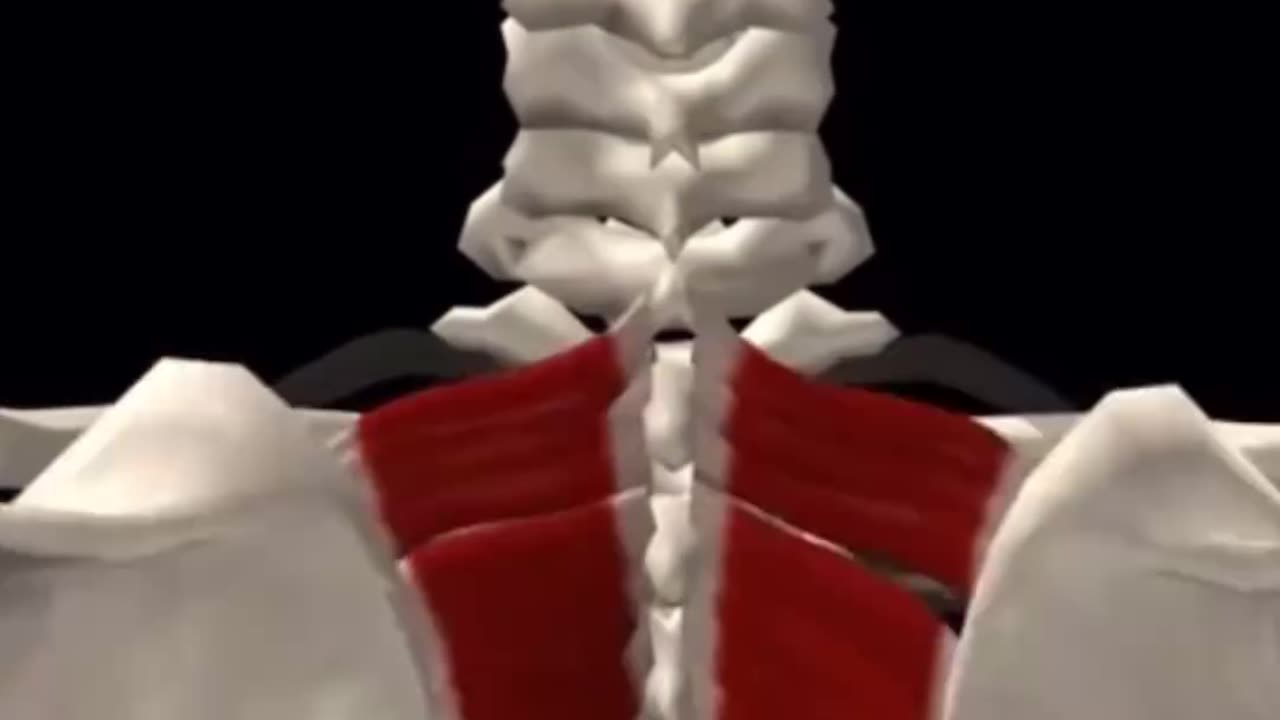Premium Only Content

The rhomboid muscles
The rhomboids are two bilateral, superficial muscles located in the upper back. They consist of two functionally similar muscles called rhomboid minor and rhomboid major. Together with trapezius, levator scapulae and latissimus dorsi, they comprise the superficial layer of the extrinsic back muscles.
The rhomboid muscles extend between the nuchal ligament, spinous processes of thoracic vertebrae and scapula. Under innervation from the dorsal scapular nerve, the rhomboids primarily retract the scapula superomedially and rotate the glenoid cavity. Therefore, the rhomboids are important to stabilise the scapula into position and reinforce the shoulder.
Rhomboid major is a broad quadrilateral muscle that originates from the spinous processes of the second to second to fifth thoracic vertebrae (T2-T5). The muscle extends obliquely in an inferolateral direction to insert into the medial border of scapula, between the inferior angle and root of the spine of scapula. The attachment takes place both on the dorsal and costal aspects of the medial border of scapula.
The main action of the rhomboid muscles is scapular retraction around the scapulothoracic joint. Scapular retraction is a simultaneous sliding of the scapula superiorly and medially along the trunk. This superomedial movement of the scapula rotates the glenoid cavity inferiorly, dropping the shoulder girdle. By opposing excessive scapular protraction, the rhomboids help to maintain a correct posture when sitting, standing and walking.
-
 11:23
11:23
Nikko Ortiz
1 day agoArmy Tik Tok Fails Go Hard
24.8K5 -
 2:27:44
2:27:44
Side Scrollers Podcast
17 hours agoSilksong is “TRANS CODED” + YouTube GASLIGHTS Creators + Asmongold Stops Streaming | Side Scrollers
6.41K15 -
 16:08
16:08
GritsGG
9 hours agoRank 1 Warzone Player VS Stream Snipers & a Cheater!
3.11K1 -
 1:39:16
1:39:16
The HotSeat
12 hours ago👉 STOP Blaming Each Other — Look at the Media!
22.3K24 -
 22:34
22:34
The Pascal Show
9 hours ago $0.01 earnedFEDERAL CHARGES?! Iryna Zarutska's Attacker Gets Hit With Federal Charges After Fatal Train Attack
3.51K6 -
 LIVE
LIVE
Lofi Girl
2 years agoSynthwave Radio 🌌 - beats to chill/game to
163 watching -
 13:05
13:05
Mike Rowe
4 days agoIs College DEAD? Inside America’s #1 Trade School | Sheree Utash From #448 | The Way I Heard It
72.7K25 -
 3:01:13
3:01:13
FreshandFit
5 hours agoAyesha Curry Never Wanted Steph Curry
61.4K10 -
 23:28
23:28
DeVory Darkins
10 hours ago $10.50 earnedTrump official ANNIHILATES Democrats in heated debate as CNN gets caught sympathizing with criminals
21.3K64 -
 1:02:26
1:02:26
The Nick DiPaolo Show Channel
12 hours agoPOC Murders Another White Woman | The Nick Di Paolo Show #1790
57.5K70